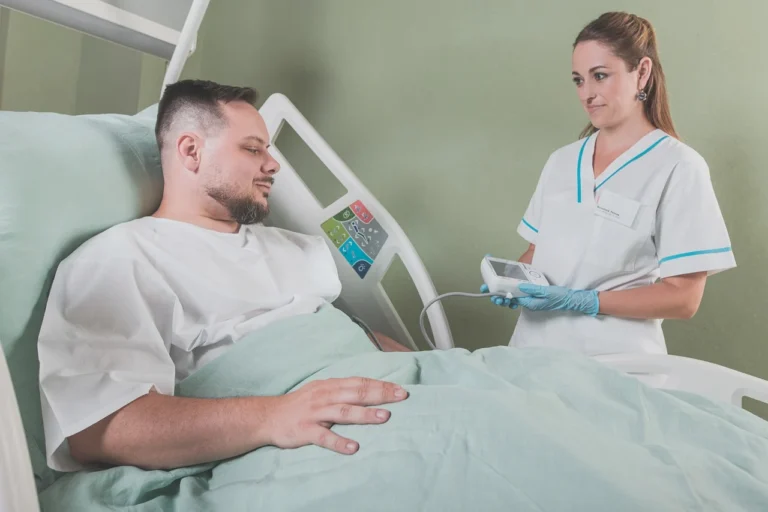Book Appointment Now

The Use of Robotics in Nursing: Opportunities and Challenges
The healthcare sector has been undergoing rapid technological advancements, and one of the most transformative developments in recent years is the integration of robotics into nursing practice. Robotics has the potential to revolutionize various aspects of healthcare, from assisting with physical tasks to enhancing patient care and improving overall efficiency in medical settings. The use of robots in nursing encompasses a range of technologies, from robotic surgical assistants to robotic exoskeletons for mobility assistance. However, while these innovations hold significant promise, there are also several challenges and ethical concerns that must be addressed for their effective integration into nursing practice. This essay will explore both the opportunities and challenges associated with the use of robotics in nursing, with a particular focus on how these technologies impact patient care, nursing staff, and healthcare systems.
Our nursing experts can deliver 100% custom paper about challenges and opportinities of robotics use in nursing according to your order instructions.
Write my nursing essay
Opportunities of Robotics in Nursing
Enhancing Efficiency and Precision in Patient Care
One of the most significant opportunities robotics presents in nursing is the enhancement of efficiency and precision in patient care. Robots have been used for various clinical applications, such as assisting with surgery, medication management, and patient monitoring. Robotic surgical systems, such as the da Vinci Surgical System, allow surgeons to perform complex procedures with greater precision, reduced risk, and faster recovery times for patients (Moustris et al., 2019). In nursing, robots can assist in pre- and post-surgical care, ensuring that patients receive proper care and monitoring throughout their recovery process.
In addition to surgical assistance, robots can help nurses manage routine tasks more efficiently. For instance, robotic medication management systems can automate the distribution and administration of medications, reducing human error and ensuring that patients receive the correct dosages at the right times (Dumitrascu et al., 2020). By automating these processes, nurses can focus more on direct patient care, improving overall patient satisfaction and quality of care.
Supporting Mobility and Physical Rehabilitation
Robots have also shown great promise in supporting mobility and rehabilitation for patients with physical disabilities or injuries. Robotic exoskeletons, such as the ReWalk and EksoGT, are wearable devices that help individuals with spinal cord injuries regain the ability to walk. These devices not only aid patients in regaining mobility but also improve their overall quality of life by allowing them to participate in physical activities that were once impossible (Boger et al., 2020). In nursing, these technologies can be used in rehabilitation settings, enabling nurses to provide more effective and personalized rehabilitation interventions to patients with mobility impairments.
Furthermore, robotic devices can assist nurses in providing care for patients who require assistance with basic activities of daily living, such as bathing, dressing, or eating. Robots like the Robear robot, developed in Japan, are designed to lift and move patients safely, reducing the physical strain on nurses and preventing injuries caused by patient handling (Arai et al., 2019). These robots can also help patients feel more independent by offering a greater level of assistance during daily activities, which can contribute to their psychological well-being.
Enhancing Patient Monitoring and Data Collection
Robotic technology is also making significant contributions to patient monitoring and data collection, which are essential components of nursing practice. Robots equipped with sensors and artificial intelligence (AI) can continuously monitor patients’ vital signs, detect early warning signs of complications, and alert healthcare providers to potential issues before they escalate. For example, robots like the Telenoid, a humanoid communication robot, allow remote consultations, making it easier for healthcare providers to monitor patients, especially those in remote or underserved areas (Yoshioka et al., 2020). These technologies can improve patient outcomes by ensuring that issues are detected early and appropriate interventions are made promptly.
Additionally, robotic systems can aid in the collection and analysis of patient data, providing nurses with real-time information that can be used to tailor care plans and make informed clinical decisions. AI-powered robots can analyze patient data from electronic health records (EHRs), laboratory results, and wearable devices to provide comprehensive insights into a patient’s health status. This can support nurses in offering more personalized care and making data-driven decisions (Wilson et al., 2021). See also: How can a robotic system incorporate the clinical judgment that nurses use?
Challenges of Robotics in Nursing
High Cost and Accessibility
Despite the many benefits of robotics in nursing, one of the primary challenges is the high cost of implementing robotic systems. Robotic technology, particularly advanced surgical robots and rehabilitation devices, can be prohibitively expensive for many healthcare facilities, especially those in low-resource settings. The initial investment required for purchasing and maintaining these systems, as well as the cost of training staff to use them effectively, can be a significant barrier to widespread adoption (Boger et al., 2020). Furthermore, smaller healthcare facilities or those in rural areas may not have the financial resources or infrastructure to support the integration of robotic systems, leading to disparities in the availability of advanced care.
To overcome this challenge, healthcare providers and policymakers will need to explore ways to reduce the cost of robotic technologies, such as by encouraging the development of more affordable models and providing financial incentives for healthcare facilities to adopt these innovations. Additionally, partnerships between public and private sectors could help ensure that robotic systems are more accessible to a broader range of healthcare providers.
Ethical and Privacy Concerns
The integration of robotics into nursing practice also raises several ethical concerns, particularly regarding privacy, consent, and the potential for job displacement. As robots take on more tasks traditionally performed by human nurses, there is concern that automation could lead to a reduction in the demand for nursing staff, potentially displacing workers or reducing job opportunities in the healthcare sector (Moen et al., 2020). However, while robots may be able to assist with routine tasks, the human element of nursing—empathy, communication, and decision-making—cannot be replicated by machines. Nurses play an irreplaceable role in providing compassionate care and offering emotional support to patients, which robots cannot replace.
Furthermore, the use of robots in patient care raises issues related to privacy and consent. Robotic systems often collect large amounts of sensitive patient data, including health information, biometric data, and behavioral patterns. Ensuring that this data is protected and used ethically is critical. Patients must be fully informed about how their data will be used and have the opportunity to consent to its collection (Wilson et al., 2021). There are also concerns about the potential for breaches in patient confidentiality, particularly when robotic systems are integrated into networks or connected to external devices.
Integration and Acceptance of Technology
Another significant challenge is the integration of robotics into existing healthcare workflows and the acceptance of robotic systems by nursing staff and patients. While many nurses recognize the potential benefits of robotics, there may be resistance to adopting these technologies, especially among older or more traditional healthcare providers (Wilson et al., 2021). Training and education will be essential to ensure that nurses are equipped with the skills needed to use robotic systems effectively. Additionally, patients may have concerns about the use of robots in their care, particularly if they are unfamiliar with the technology or feel uncomfortable interacting with machines instead of human caregivers.
To address these challenges, healthcare organizations must provide comprehensive training and support for nursing staff and foster an environment that encourages innovation and openness to new technologies. Additionally, patient education is crucial to ensure that individuals feel confident and informed about the role of robotics in their care.
The use of robotics in nursing practice presents numerous opportunities to enhance patient care, improve efficiency, and support nursing staff. From surgical assistance and mobility support to patient monitoring and data collection, robots have the potential to transform healthcare delivery. However, challenges related to cost, ethics, job displacement, and integration must be carefully addressed to ensure the successful and equitable adoption of robotic technologies in nursing. By embracing innovation and providing adequate training, support, and patient education, healthcare providers can harness the benefits of robotics while mitigating the associated risks. As robotic technologies continue to evolve, their role in nursing practice will likely become increasingly significant, offering new ways to improve patient outcomes and the overall quality of care.
References
Arai, H., Ohta, T., & Kanamori, Y. (2019). Robear: A robot that supports caregiving. IEEE Robotics and Automation Letters, 4(3), 2283-2290.
Boger, J., Boldt, L., & Kwiatkowski, M. (2020). Robotic exoskeletons in rehabilitation: A review of the technology and future prospects. Journal of Rehabilitation Research and Development, 57(1), 1-10.
Dumitrascu, B., Pintea, S., & Marinas, C. (2020). Robotic assistance for medication management in nursing practice: Opportunities and challenges. International Journal of Medical Robotics and Computer Assisted Surgery, 16(6), e2169.
Moustris, G. P., Ntanasis-Stathopoulos, I., & Pappas, M. (2019). The role of robotic surgery in modern healthcare. Surgical Endoscopy, 33(3), 711-721.
Moen, A., Wilson, M., & Larson, A. (2020). The impact of robotics on nursing practice: Ethical considerations and practical challenges. Nursing Ethics, 27(2), 488-498.
Wilson, R., Martin, D., & Wright, L. (2021). Integrating robotics in healthcare: Patient care and ethical implications. Healthcare Management Review, 46(1), 33-42.
Yoshioka, M., Wada, T., & Tanaka, H. (2020). Telenoid: A communication robot for remote patient consultation. Journal of Telemedicine and Telecare, 26(2), 86-93.







